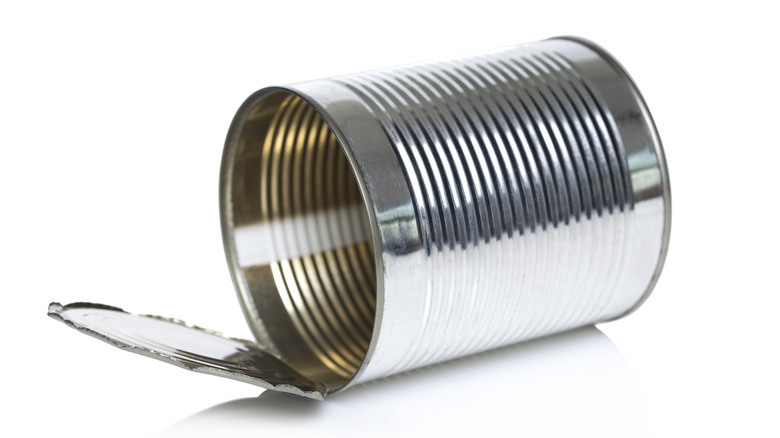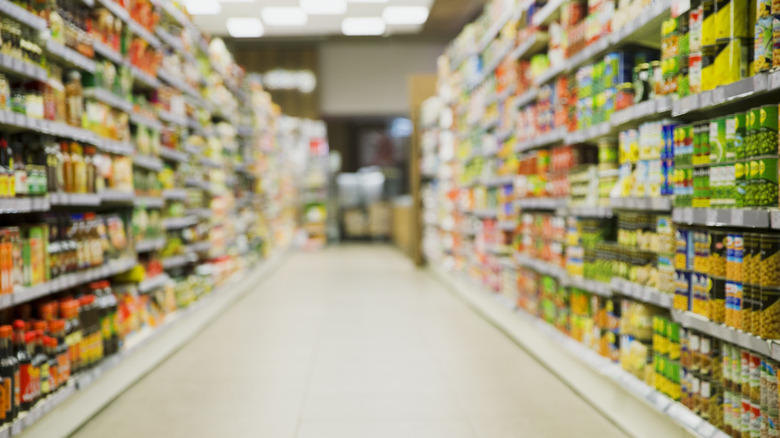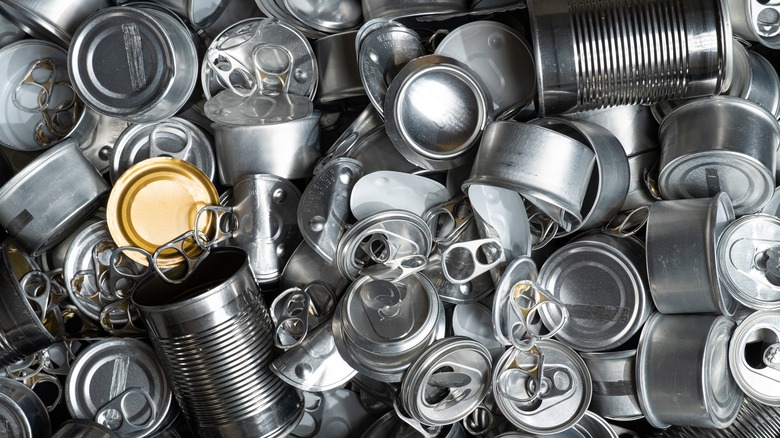Why Canned Goods Are Ribbed
Apart from Thanksgiving, when we enter the great debate over the grooves in canned cranberry sauce, there are few times we discuss the ridged sides of tins. And that's a shame because the ribbing — also referred to as depressions or body beads – is quite important. It strengthens the can's walls and, thus, helps keep our food safely sealed and stable during the long journey from production line to table.
The canning process involves high heat and steam, which requires a lot of metal. Plus, during shipping, there's always a risk of dropping or jostling, which could cause the seal to break and render the contained food inedible. (Just as you should never eat canned food that was accidentally frozen, you should toss pantry items with deep dents.)
It's in the manufacturers' best interest to create a shape able to withstand the bumps along the way. Adding ribbing does just that. The bends in the material tap into some complex geometry, and the grooves ultimately add strength to the metal shape, similar to the design of thin but mighty corrugated cardboard.
A brief history of canned goods
Humans figured out the canning process through a series of trials and errors that spanned centuries. Historians credit the invention of canned foods to French chef Nicolas Appert in 1809. His work was a response to a nationwide challenge from Napoleon, who was eager to find a way to feed his army as it traveled. Appert figured out a method to seal and preserve food in glass, and, although it was imperfect, he paved the way for today's pantry staples.
By 1810, an iron can was in the works — though our understanding of pasteurization was another 50 years away, as was the can opener. The tool wasn't invented until the mid-1800s. This meant soldiers, major consumers of canned food at that point, had to hack open their tins with a weapon if they wanted dinner. It took manufacturers until well into the 1900s to determine safer food preservation practices.
Nonetheless, the metal cylinders went on to have a place in history in the United States, first by feeding Civil War soldiers and then taking a larger role among homemakers as shelf-stable food options during the Great Depression. Nowadays, almost every home has at least one canned item, with the average pantry containing 24 items, according to a survey by Cans Get You Cooking. And with the upswing of tinned fish, it's likely we'll see more creativity in the industry in years to come.
Ribbed vs. straight-edged cans
Not every can has ribbed sides. Ground coffee, oats, and protein powders often get sealed into straight-sided tins. The honor of ribbed sides only goes to packaged foods that have to withstand the blistering heat and pressure of pasteurizing and vacuum sealing. In addition to strengthening the metal during transit, the ridges also allow the cylinder to expand and shrink during the intense process.
That's not to say other foods wouldn't benefit from the added shaping. Sodas boast straight sides — except in Hawaii. There, the tops of the cans have a set of grooves, harking back to an older shape that was stronger than today's smooth version. But, similar to the reason some canned goods have pull tabs and others don't, most other carbonated beverages are packaged in thin, smooth aluminum since it's cheaper to produce and works well enough.
The shape works because, unlike tinned food, sodas have a high internal pressure that gives them quite a boost in strength. As in, they're capable of supporting the weight of a human when they're sealed. Preserved tomatoes, soups, and beans, on the other hand, aren't pressurized, and that's why they need supportive ridges before they can get stacked and shipped.



